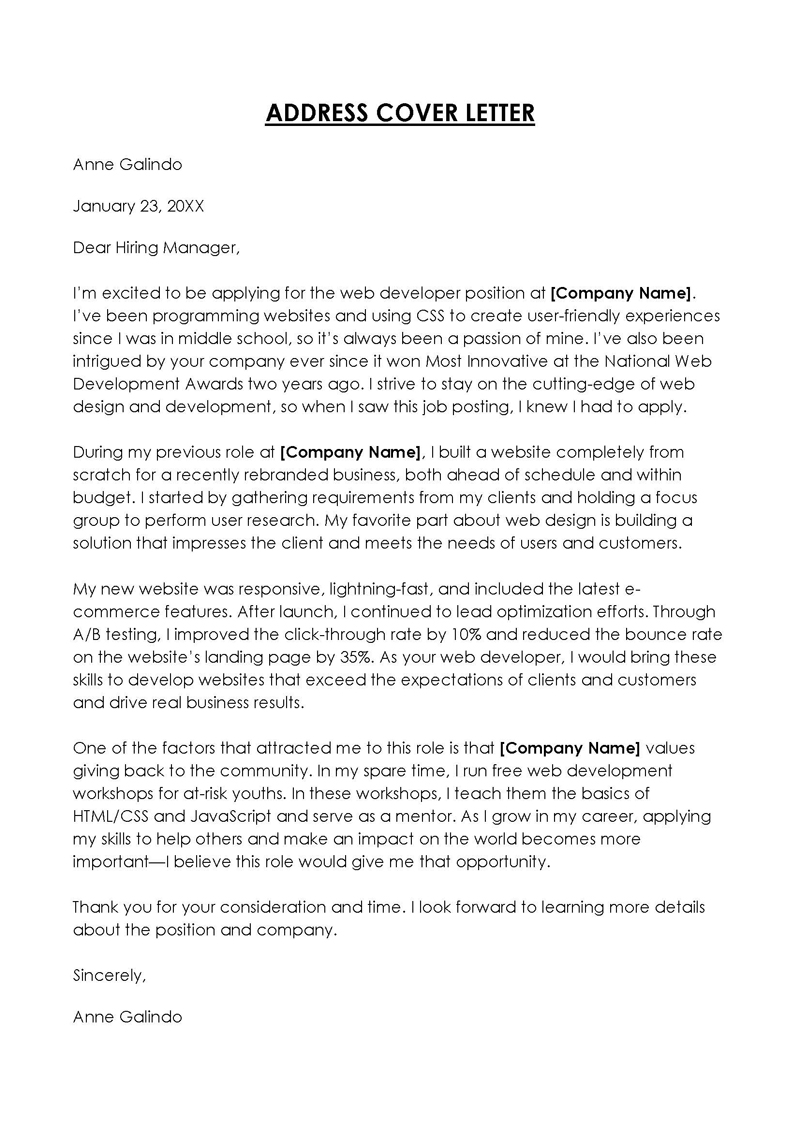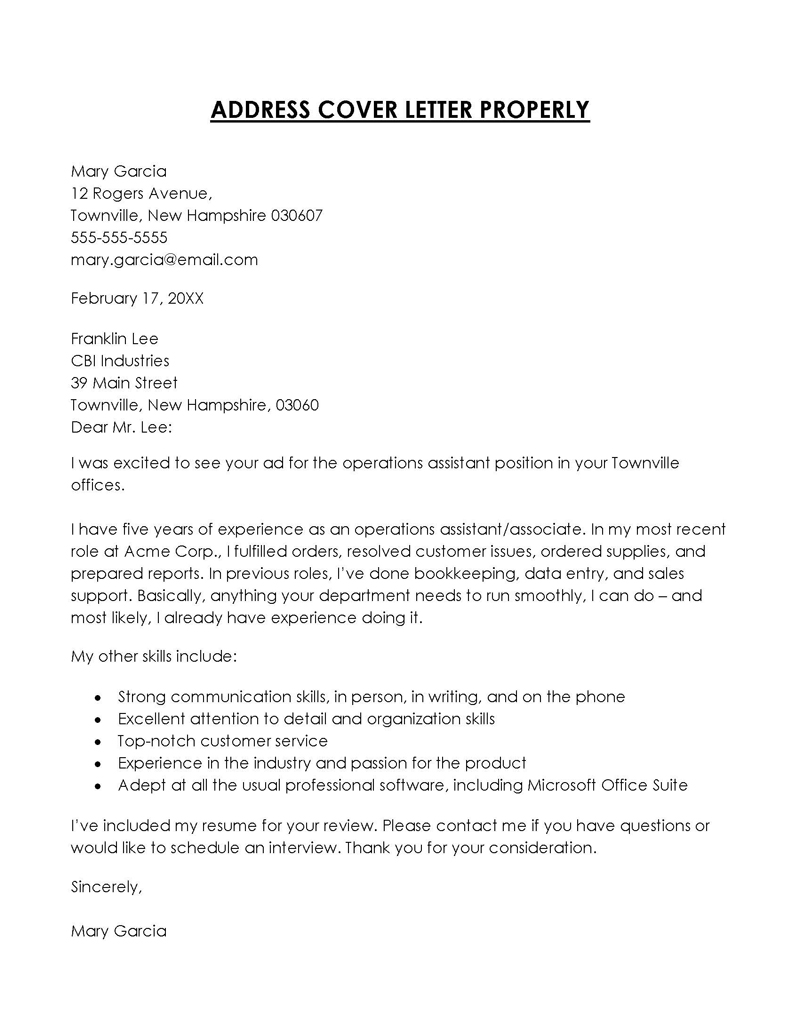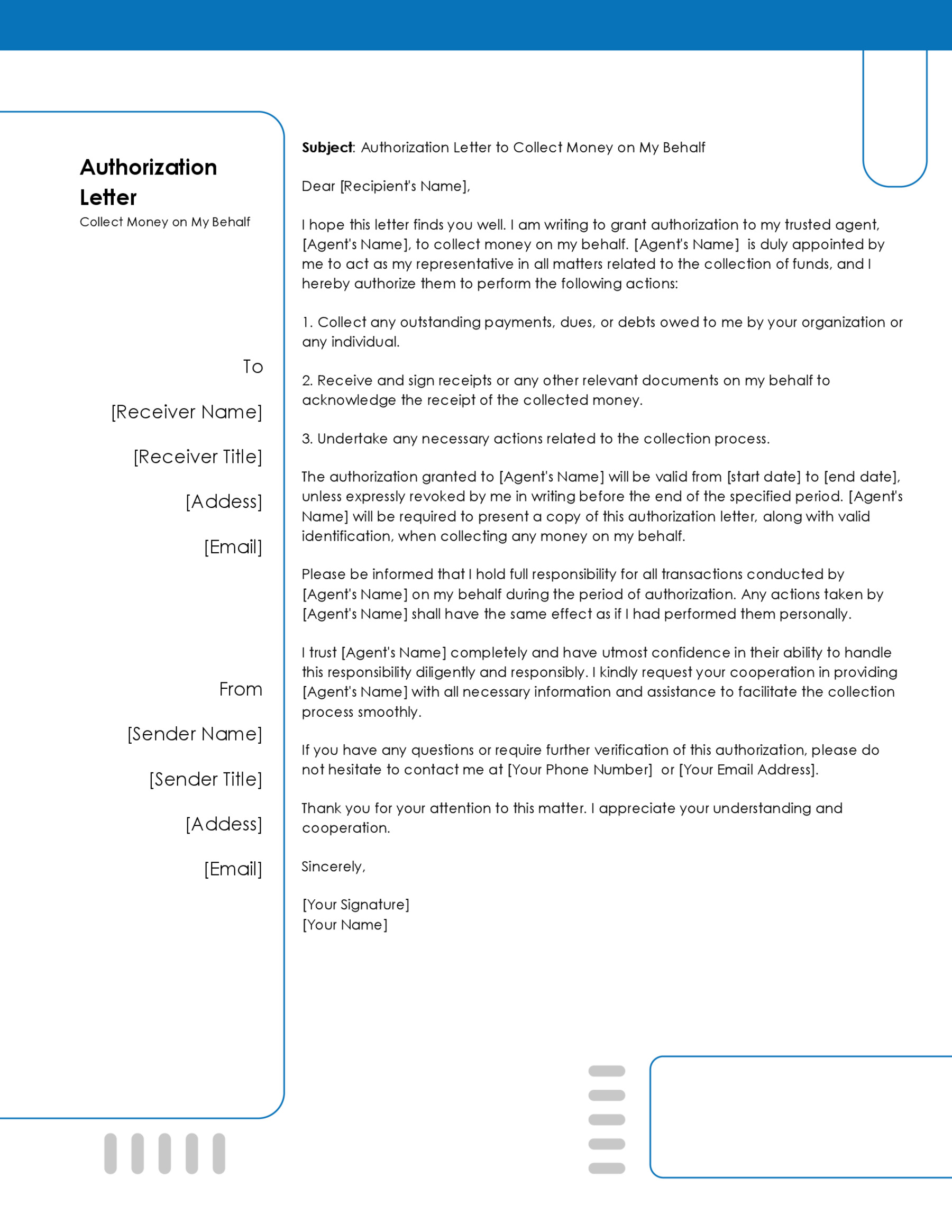A cover letter is an official one-page document you submit as part of your job application alongside your resume or curriculum vitae.
The main aim of writing this letter is to highlight your professional background to the hiring manager or potential employer.
A well-written cover letter can spark the prospective recruiter’s interest and get them to read your other job application materials. However, a poorly formatted letter might mean that your job application documents will be disregarded, and you want to make sure this does not happen. As such, before you start writing this letter, you must have adequate information on how to draft an effective cover letter, starting with how to address the letter correctly.
How you address your cover letter is very important, as this is usually the first thing the hiring manager reads when going through it. A well-formulated cover letter address shows your enthusiasm for the job and demonstrates your attention to detail skills.
This is because it will be specific (i.e., include the hiring manager’s name and title), indicating that you took your time researching the company and the cover letter recipient. Moreover, addressing your letter properly sets the tone for the rest of your letter, making your job application stand out.
Free Templates


How to Address a Cover Letter Properly
Knowing how to address your cover letter professionally and appropriately will enable you to make a positive impression on the recruiter reviewing your letter, increasing your prospects of getting more job interviews and ultimately landing the position you were hoping to secure.
The following are different methods of addressing the situation, depending on the situation:
Addressing a cover letter with no name
The most appropriate way of addressing this letter is to use a formal salutation addressed directly to the recruiter or hiring manager using their full names. However, in some cases, research into the company and whom to address the cover letter to may not disclose the recruiter’s name. In such a situation, you can explore alternative methods of addressing the letter that do not negatively impact your chances of getting a job interview.
These include:
Use academic or professional title
Using the recipient’s right academic or professional title is considered an excellent greeting option. It demonstrates that you read the job description and tailor your greeting based on the company department where the job position is currently available, the hiring manager’s title, or the team with which you will potentially work. Nonetheless, you will need to be as specific as possible to demonstrate that you have done your research and aren’t just sending a generic cover letter to many recruiters from different companies hoping to land a position in either of the companies.
Examples of professional greetings in such a scenario include:
- Dear Customer Support Hiring Manager/Team, in the event you are applying for a customer service representative position
- Dear Chief Financial Officer/Accounting Manager, if you are applying for an accounting position
- Dear Talent Acquisition Team
- Dear Human Resources Manager, among others.
- No salutation
If you cannot find the recipient’s name, do not know the recipient’s professional or academic title, and are unsure of the department where the job is currently available, you can opt to skip the salutation and start your cover letter with the introductory paragraph. This is advisable, as it avoids the chance of making things worse. However, it is essential to note that this should be considered a last resort, as not including a salutation may come across as being rude, overly lazy, or implying that you do not know how to write this letter, all of which may put you out of contention for the job.
Use “dear hiring manager”
If you cannot find any specific name or sufficient department information, use the “dear hiring manager” salutation, as it sounds professional and is gender-neutral. Some applicants like to use “Dear Sir/Madam” as a generic salutation for cover letters, but its use is a bit old-fashioned. In addition, it may be considered overly formal by some employers. The “To Whom It May Concern” greeting is also discouraged as it sounds too impersonal and outdated.
Other options
The most common and acceptable way to address a cover letter when the letter’s recipient is unknown is by using the ‘Dear Hiring Manager” greeting.
Still, you can use other alternative greetings, including:
- Dear IT Department
- Dear Company ABC Hiring Manager/Recruiter
- Dear Head of Nursing
- Dear Company XYZ Team
- To the Catering Department, etc
Addressing using a formal full name
Generally, most job descriptions or job postings will provide the name of the hiring professional or the manager you will be working for. In such cases, it is preferable to address your cover letter formally using the hiring professional’s first and last name. Addressing your letter using the recipient’s formal full name establishes a personal connection and sets the right tone for your letter.
EXAMPLE
- Dear John Doe
- Dear Alexis Brown
- Dear Johnson Kingstone
Using gender-specific titles such as Mr., Ms., or Mrs. is only advisable if you are sure of the receiver’s gender and marital status. Suppose you know the hiring professional personally and they have told you their preference; you can use their title and last name when addressing the cover letter.
EXAMPLE
- Dear Mrs. Patterson
- Dear Mr. Stanley
- Dear Ms. Rodríguez
Given that your contact has a professional title that you are aware of, you may want to replace the gender-specific titles such as Mr. or Mrs. with the receiver’s professional title or honorifics, as this is considered more respectful. For example, if the letter’s addressee is an individual with a medical or doctorate degree, you will need to write Dr. before their name as a sign of respect.
More examples
- Dear Prof. Hussein
- Dear Rev. Purity Smith
- Dear Lt. Angelou
Address using the only name for a non-gender-specific name
If you know the hiring officer’s name but cannot definitively tell their title, gender, marital status, or preferred pronouns, it is best to address them using only their full name to avoid any mistakes.
EXAMPLE
- Dear Alex Brown
- Dear Jamie Brown
- Dear Mohamed Ahmed,
- Dear Tiffany Hale
When addressing a cover letter, it is best to be as specific as possible and personalize it accordingly to impress the hiring professional and compel them to read the rest of your letter.
tip
Including a specific name and title is always considered the best way to address a cover letter.
However, if your research efforts do not disclose the hiring manager’s name, you can still be as specific as possible and consider using the department or academic title, or address your letter in a more generalized manner but with a particular audience in mind.
How do You Find Out to Whom to Address a Cover Letter?
Most organizations provide the names of the hiring managers so that applicants immediately know to whom to address the letter.
However, in cases where you are not given the recruiter’s name, consider the following effective ways to discover whom to address your cover letter:
Double-check the job posting
The most convenient way to find out the name of the hiring professional is to double-check the job posting or job description. This is because most job descriptions contain comprehensive information on job application submission criteria, which generally include the letter’s receiver.
Examine the email address provided in the job description
If the hiring manager’s name is not included in the job description or is not apparent to you, you can discover the hiring manager’s name by examining the email address provided in the job description. For example, if the email address provided in the job description is lindsley@companyname.com, a Google search combining the person’s name as indicated in the email and the company name might find you the hiring manager’s full name. However, this may not always work, as some organizations prefer to use business emails.
Check LinkedIn
LinkedIn job postings often include the name of the person offering the job. LinkedIn’s profile name is more often than not the hiring manager’s name, and you should use that name in your address line.
Check the company website
Suppose the company you are applying to has an official company website. Then try to find the head of the relevant department on the company’s staff page or do a LinkedIn company search.
The supervisor’s title
In most cases, job descriptions list who the new hire will report to, such as the head/director of accounting, the director of nursing services, etc., without disclosing a specific name. In this case, there are various search options you can explore to find out the hiring manager’s name.
This includes running an advanced LinkedIn or Google search for all directors of accounting or nursing services in that company, checking with your network for someone who might have an idea of the person’s name, including your professional networks, or searching the company site for listings of staff members by title.
Call
If all of the above-mentioned options fail, you can consider contacting the company by phone or email and telling them that you are applying for a specific job position. Still, there are chances that you may not find the contact person, and you would like to address your cover letter to the right person.
How to Address an Email Cover Letter
If the company’s preferred job application submission criterion is through email, you will need to format your cover letter in the email’s body or as an attachment along with your resume. If you are formatting the letter in the email’s body, create a strong subject line that is clear and concise to enable the recipient to know the purpose of the email. Your subject line should include the job title you are applying for, your full name, and a phrase that reiterates what the email contains.
After providing a suitable subject line of 6–10 words long, include a professional and specific salutation. If you know the addressee’s name, address the letter to them using either their full name or “Mr.” or “Ms.” preceded by their full names. If the recipient has a professional or academic title, such as “Dr.” or “Prof.”, use that in place of Mr. or Mrs.
EXAMPLE
Subject Line: Job Application for Financial Analyst, Jessica Jones
Dear Mr. John Doe, or Dear Dr. Vincent Hopkins,
If you are unable to determine the recipient’s name from the email provided or through a quick search, use a general salutation such as “Dear Hiring Manager” or leave out the salutation and begin your letter with the introductory paragraph.
tip
Once you have selected a suitable salutation, follow it with a comma or colon, skip a line, and then start the first paragraph of your letter. This applies to letters sent via email or traditional mail.
Do’s and Don’ts for Addressing a Cover Letter Properly
These letters are formal; thus, they should always be addressed professionally and with a specific audience in mind to demonstrate an applicant’s professionalism and attention to detail.
Do’s
Discussed below are the steps for addressing a cover letter:
Do some research to find the hiring manager’s name
Whenever possible, this letter should always be addressed to someone specifically in their official name. This makes the letter seem more personalized to the reader and helps differentiate you from other candidates. Therefore, do research and try to find the hiring manager’s name. However, if you can’t find the recruiter’s name, you may list the contact name as “Hiring Manager.”
Do read job descriptions for the hiring manager’s name
Double-checking the job description to find out the hiring manager’s name or whom you will report to if you are hired is very important as it shows your keenness and attentiveness skills, which most employers look for in potential employees.
Do customize your letter to the audience
If you research the company website and LinkedIn profiles, double-check the job description or email address, and you are still not able to find the letter recipient’s name, consider customizing your letter to a specific audience rather than a specific individual. You can address the letter to the department, faculty, the company, or the overall hiring manager.
Don’ts
Discussed below are the don’ts for addressing this letter:
Don’t use “to whom it may concern.”
While some applicants prefer to address their letter to ‘To Whom It May Concern” in cases where the department head, exact department, or recruiter’s name is unknown, it is greatly discouraged, as it is impersonal and outdated.
Don’t use “Dear Sir or Madam.”
Using dear sir or madam as a greeting line in cover letters is also discouraged, as it is overly formal and old-fashioned. While it may seem logical to address an unknown recipient, it is impersonal and might not fit the specific company culture.
Don’t address a letter incorrectly
Knowing how to address your letter correctly makes you a very visible and appealing candidate to potential employers. On the other hand, addressing your letter incorrectly may create a negative picture of you in the hiring manager’s mind, thus reducing your chances of getting a job interview.
Don’t address using “Hello or hi.”
The address line of this letter should be written formally to maintain a sense of professionalism. Starting the salutation with greetings such as “hello,” “Hi,” and “hey” makes the tone of the letter informal, which is incorrect. Always consider starting your salutation with “Dear…” or simply writing the addressee’s full name.
Final Thoughts
Knowing how to address your cover letter properly can make the difference between your application being noticed and overlooked by hiring professionals. The most appropriate way to address it is by personalizing it for the recipient using their first and last names.
There are various effective ways to find the recipient’s name, including double-checking the job description, examining the given email address, checking LinkedIn and the company website, or contacting the company via email or a phone call.
However, if these targeted searches do not find you the hiring manager’s name, there are other acceptable strategies to address your letter in a more generalized but specific manner. Remember that “To Whom It May Concern” and “Dear Sir/Madam” are inappropriate salutations for a cover letter, as they are impersonal and outdated.












